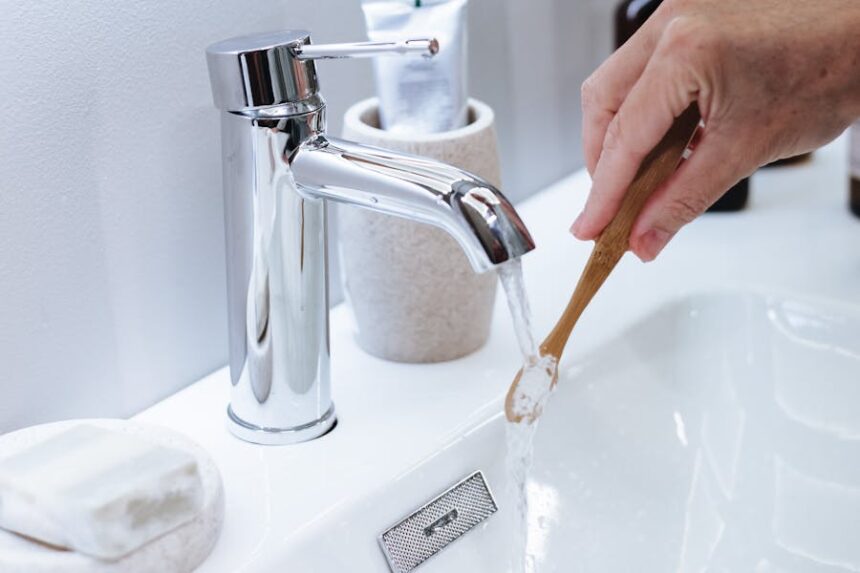Saving water at home doesn’t have to mean sacrificing comfort or convenience. With just a few mindful choices, you can reduce your household water usage, lower your bills, and contribute to a healthier planet. Many people don’t realize how much water they use daily or how small changes can lead to big savings. By taking a closer look at your water habits and making some simple adjustments, you can cut down on waste and keep your budget in check.
Here are practical tips to help you conserve water without any drastic lifestyle changes.
1. Monitor Your Water Usage Efficiently
One of the easiest ways to get started on conserving water is by monitoring your current usage. Understanding how much water you use can give you valuable insights into areas where you might be overusing. Many people find that once they see their daily or weekly water consumption, they’re motivated to make simple changes.
Water meters are a smart way to track household water usage, giving you insight into daily consumption and helping you pinpoint areas where you might be using more water than needed. Bluebot water meters are top-of-the-line options for this purpose. They allow you to monitor your water usage in real-time through a smartphone app, letting you see exactly how much water is used in different areas of your home, from the shower to the garden. Bluebot meters can also alert you to potential leaks, a common source of wasted water, and display the real-time cost of your usage, helping you stay on budget and make informed adjustments.
2. Fix Leaks Immediately
Leaks are one of the most frequent causes of water wastage in homes, and they can go unnoticed for months or even years. A small, steady drip might not seem like a big deal, but over time, it can add up to thousands of gallons of wasted water and higher bills.
To conserve water effectively, check your home for leaks at least once a month. Toilets, faucets, and showerheads are common culprits. For instance, a “silent” toilet leak can go undetected but may waste hundreds of gallons per day. Test for a toilet leak by adding a few drops of food coloring to the toilet tank. Wait for about 10 minutes, and if the color shows up in the bowl without flushing, you leak.
Faucet leaks are easier to spot, as you’ll likely notice water dripping even when the faucet is turned off. If you find any leaks, tighten the fixture or replace the worn-out washer or gasket. For showerheads, ensure they are properly screwed on and sealed with plumber’s tape if necessary. Fixing small leaks is something you can often do yourself, but for more complex issues, calling a plumber may be worth the investment.
3. Choose Water-Efficient Fixtures
Switching to water-efficient fixtures is a simple and effective way to conserve water without changing your daily habits. Water-saving showerheads, faucets, and toilets are designed to use less water without affecting performance.
Low-flow showerheads, for example, reduce the amount of water flowing through while still providing strong water pressure. The average low-flow showerhead can save up to 40% of water compared to standard ones. Similarly, faucet aerators are small, affordable add-ons that limit water flow in sinks, making it easy to use less water without even noticing.
Water-efficient toilets are another smart investment, especially if you live in an older home with older models. High-efficiency toilets use only about 1.28 gallons per flush, compared to the 3.5 gallons used by many older toilets. Making this upgrade can save hundreds of gallons of water every month.
4. Use Smart Watering Techniques for Lawns and Gardens
Outdoor water use can contribute to a significant portion of your household’s total consumption, especially in the summer. By adopting some smart watering techniques, you can keep your yard healthy while conserving water.
Watering your lawn and garden during the early morning or late evening helps minimize evaporation. If you water during peak sunlight hours, much of the water will evaporate before the soil and plants can absorb it. Installing a drip irrigation system is another excellent option. Drip systems provide water directly to the roots of plants, ensuring they receive just the right amount of moisture without unnecessary waste.
Rain sensors and timers can also be useful tools for outdoor watering. Rain sensors prevent your irrigation system from running when it’s raining, while timers allow you to control how long each zone in your yard gets watered. Both tools make it easy to save water without sacrificing the health of your landscape.
5. Practice Mindful Water Usage Daily
One of the easiest ways to conserve water at home is by making small changes to your daily habits. These small adjustments can add up over time and significantly reduce your household’s water usage.
For example, turn off the tap when you are brushing your teeth or shaving. This one habit can save gallons of water every day. When washing dishes by hand, fill the sink with water instead of letting it run continuously. If you have a dishwasher, try to run it only with a full load. Newer dishwashers generally use less water than washing dishes by hand, so using them efficiently can save even more water.
Shortening your shower time by even a couple of minutes can make a noticeable difference. Consider setting a timer to help you stay on track, especially if you’re someone who enjoys long showers. Running only full loads in your washing machine is another easy way to save water. Many newer washing machines offer water-saving settings, so be sure to use them if they’re available.
Taking steps to conserve water at home can be simple and rewarding. From monitoring usage with smart meters to fixing leaks promptly, each small change can make a difference. Switching to water-efficient fixtures, adopting smart watering techniques, and practicing mindful habits are all easy ways to save water without sacrificing comfort.
Every drop saved helps you avoid high bills, conserve resources, and reduce your environmental footprint. So, pick one or two tips to start with today, and before you know it, you’ll see the benefits of a water-wise home.




